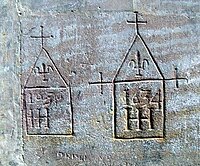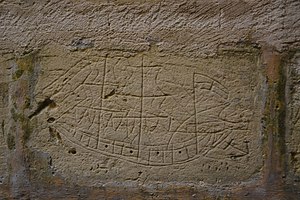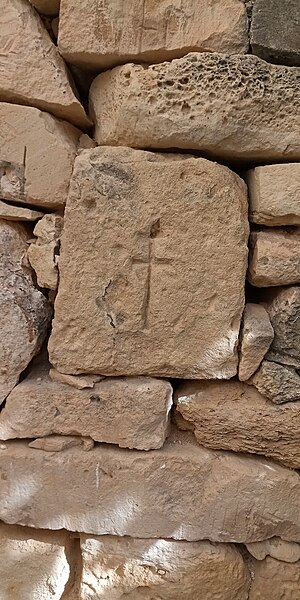Key:graffiti
 |
| Description |
|---|
| Used to tag presence of historic graffiti. |
| Group: historic |
| Used on these elements |
| Useful combination |
| See also |
| Status: in use |
| Tools for this tag |
|
The graffiti key can be used on buildings, walls and other structures to describe the historical graffito or graffiti at this place in more detail. Historic graffiti can be found in churches, on church walls, very often prison walls and were left for a variety of reasons: to leave a mark of one's presence, folk magic, to pass time etc.
This is not meant to be used on spray painted graffiti of the modern era, please look at tourism=artwork for that.
How to map
For a single, relevant graffito on a wall, you may use historic=graffiti (even though the singular would be grammatically more correct, but going down the tagging scheme, the plural makes more sense and is used colloquially for single graffiti anyways). To indicate which way the graffito is facing, it might be useful to add direction=*.
It is probably not necessary to map graffiti of initials, unless the identity is known, because they were well known political prisoners. The relevance of motifs depends on the cultural and historical surroundings of the location.
At a building with several graffiti, sometimes of several subjects, add the key graffiti=* and add the value of whatever is depicted. Please use singular forms, even when more than one of a type are present:
The table can of course be extended, depending on cultural circumstances of the location.
You can add graffiti:wikimedia_commons=* to link to a category of all graffiti of that place. In the rare occasion that the artist_name=* is known (from a prison context maybe), it can be added.
See also
man_made=survey_pointfor benchmarks which might be confused with stone mason's marks- https://maltashipgraffiti.org/, a website dedicated to record the graffiti of ships in Malta










